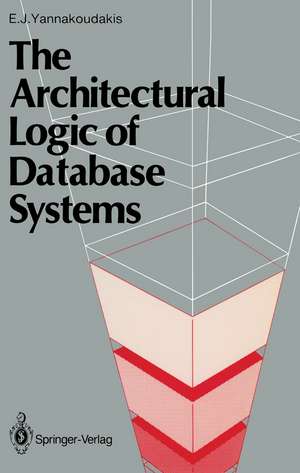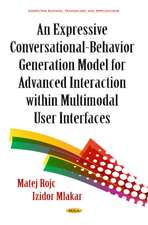The Architectural Logic of Database Systems
Autor Emmanuel J. Yannakoudakisen Limba Engleză Paperback – 18 mai 1988
Preț: 336.67 lei
Preț vechi: 420.84 lei
-20% Nou
Puncte Express: 505
Preț estimativ în valută:
64.42€ • 67.44$ • 53.30£
64.42€ • 67.44$ • 53.30£
Carte tipărită la comandă
Livrare economică 07-21 aprilie
Preluare comenzi: 021 569.72.76
Specificații
ISBN-13: 9783540195139
ISBN-10: 3540195130
Pagini: 336
Ilustrații: XIV, 318 p.
Dimensiuni: 170 x 244 x 18 mm
Greutate: 0.54 kg
Ediția:Softcover reprint of the original 1st ed. 1988
Editura: SPRINGER LONDON
Colecția Springer
Locul publicării:London, United Kingdom
ISBN-10: 3540195130
Pagini: 336
Ilustrații: XIV, 318 p.
Dimensiuni: 170 x 244 x 18 mm
Greutate: 0.54 kg
Ediția:Softcover reprint of the original 1st ed. 1988
Editura: SPRINGER LONDON
Colecția Springer
Locul publicării:London, United Kingdom
Public țintă
ResearchCuprins
1 Foundations of Databases.- 1.1 Data and Information.- 1.2 Program and File Communication.- 1.3 Program and Meta-file Communication.- 1.4 Towards a Database System.- 1.5 High Level Database Software.- 1.6 Summary.- 1.7 References.- 2 The Logic of the Database Environment.- 2.1 The Principle of Data Independence.- 2.2 Standard Software and the Database.- 2.3 Three Architectural Levels.- 2.4 Types of Users.- 2.5 Summary.- 2.6 References.- 3 Data Structures and Data Models.- 3.1 Introduction.- 3.2 Data Structures and Relationships.- 3.3 Hierarchic Data Models.- 3.4 Network Data Models.- 3.5 Relational Data Models.- 3.6 An Example Schema Model.- 3.7 An Example Subschema Model.- 3.8 Summary.- 3.9 References.- 4 The Architecture of Database Software.- 4.1 Introduction.- 4.2. Data Description Language (DDL).- 4.3 Data Manipulation Language (DML).- 4.4 Data Storage Description Language (DSDL).- 4.5 Query Language.- 4.6 Query By Example (QBE).- 4.7 Data Dictionary.- 4.8 An Overview of Software Integration.- 4.9 Summary.- 4.10 References.- 5 Communicating with Databases in Natural Language.- 5.1 Programming Languages.- 5.2 The PROLOG Programming Language.- 5.3 Natural Language System Architecture.- 5.4 Communicating with Databases by Voice.- 5.5 Speech Synthesis.- 5.6 Speech Recognition.- 5.7 An Integrated View of Man-Machine Interfaces.- 5.8 Summary.- 5.9 References.- 6 Database Design Methodology.- 6.1 Introduction.- 6.2 Top-Down and Bottom-Up Design.- 6.3 Major Stages in Database Design.- 6.4 Six Mappings.- 6.5 Decomposition and Normalisation.- 6.6 Relationships between Attributes.- 6.7 Key Attributes.- 6.8 The Five Normal Forms.- 6.9 Summary.- 6.10 References.- 7 Canonical Synthesis for Database Design.- 7.1 Introduction.- 7.2 Element Associations.- 7.3 Readying the Views for Canonical Synthesis.- 7.4 The Canonical Synthesis Algorithm.- 7.5 Further Investigations on Canonical Synthesis.- 7.6 Summary.- 7.7 References.- 8 Relational Architecture.- 8.1 Introduction.- 8.2 Domains and Attributes.- 8.3 Manipulation of Relational Tables.- 8.4 Subschema Definitions.- 8.5 Representing Trees.- 8.6 Representing Networks.- 8.7 Summary.- 8.8 References.- 9 A Network Database Language.- 9.1 Introduction.- 9.2 Logical Relationships and Set Types.- 9.3 Structural Relationships.- 9.4 Network Database Language.- 9.5 Summary.- 9.6 References.- 10 Dictionary of Database Terminology.- 11 Appendix. Example Reports from Canonical Synthesis.- 12 Acronyms.








